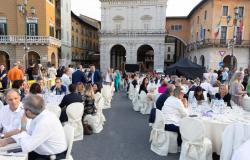
Bormio (Sondrio), 7 June 2024 – Lombardy is the Italian region most affected by the IItalian soundingthat is to say we feed products abroad and pass them off as Italian using trademarks, distorted names, images and geographical references that mislead foreign consumers. The economic damage for Lombardy is equal to 10.2 billion per year, followed by Veneto, 10 billion, and Emilia-Romagna with 9.9 billion “burned”.
These are data from research by The European House – Ambrosetti, carried out on the occasion of the 8th forum ‘The Roadmap of the Future for Food & Beverage’ in Bormio.
The country that more appreciate and care Lombard and Italian agri-food products is the Germany: for a value of 9.3 billion euros, in 2022 it will absorb 16.3% of Italian agri-food exports – up 10.6% compared to 2021. The United States followswith a value of 6.7 billion euros (11.7% of Italian agri-food exports, +18.4% compared to 2021), the Francewith a value of 6.6 billion euros (11.5% of Italian agri-food exports, with an increase of 17.3% compared to 2021), and the United Kingdom, with a value of 4.2 billion euros (7.4% of Italian agri-food exports, with an increase of 13.3% compared to 2021). Together, these countries account for almost 50% of Italian agri-food exports, demonstrating how the latter is also rather concentrated in geographical terms and not just in terms of supply chains.
L‘Italian sounding is mainly concentrated in Japan, Brazil and Germany. The average share of Italian sounding products on Japanese shelves is 70.9%, 70.5% on Brazilian ones and 67.9% on German ones. This means that, in these countries, on eleven products belonging to the categories defined on average seven evoke the Italian spirit, he is alone three are “real” Italians. Carrying out the same analysis at product level, it emerges that, with the exception of France and Canada, in all countries and for all products the share of true Italians is less than half. In particular, of the ragù available on international shelves, 61.4% is attributable to Italian sounding, as are 61.0% of the parmesan and parmesan and 60.5% of the vinegar.





